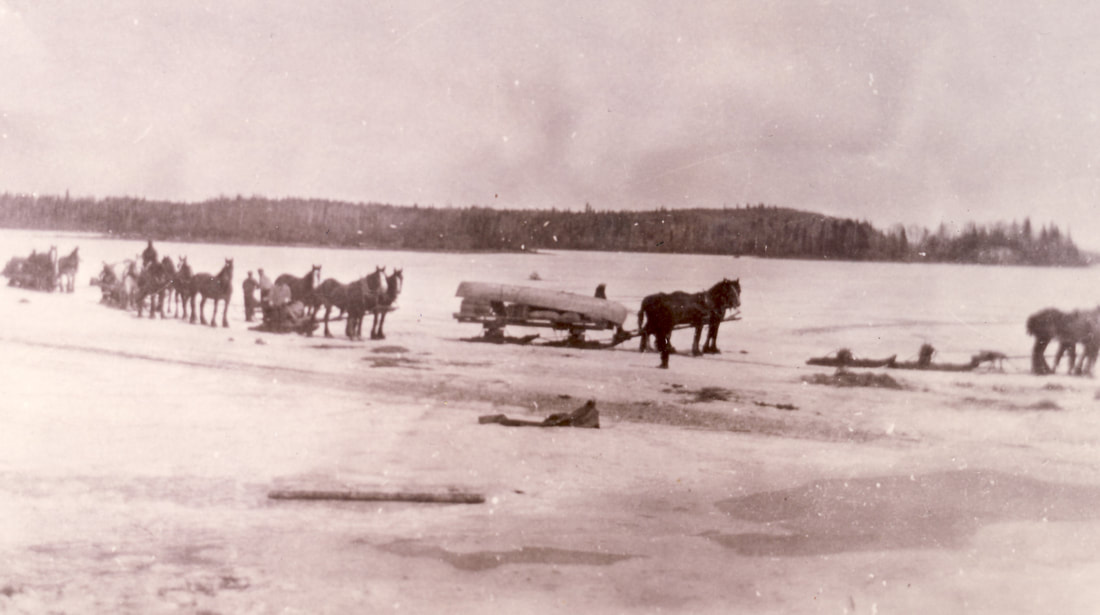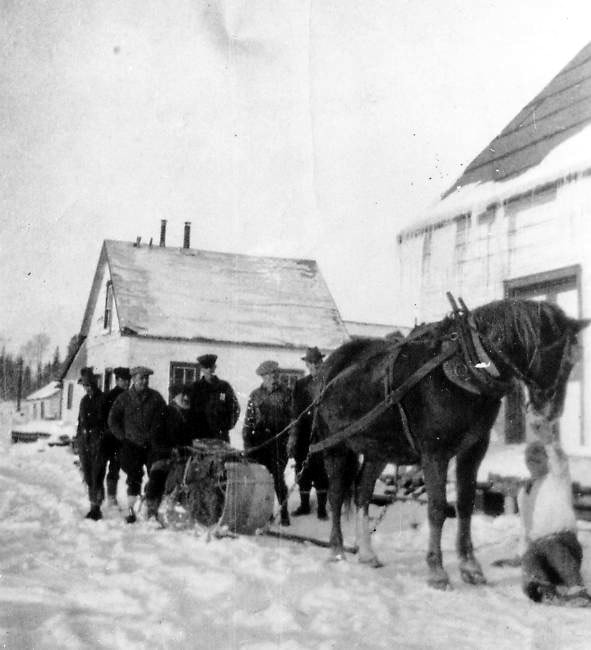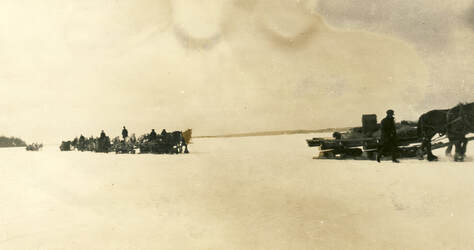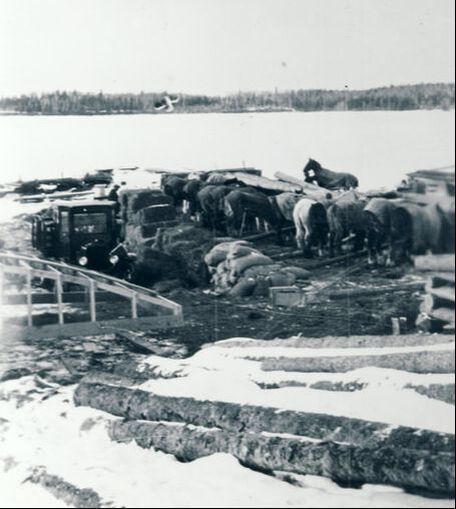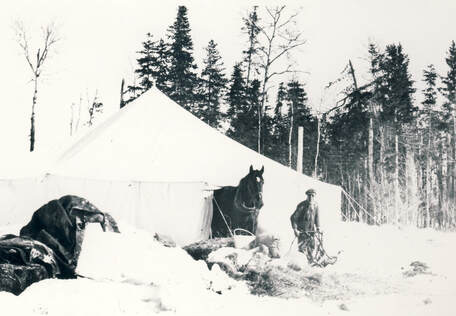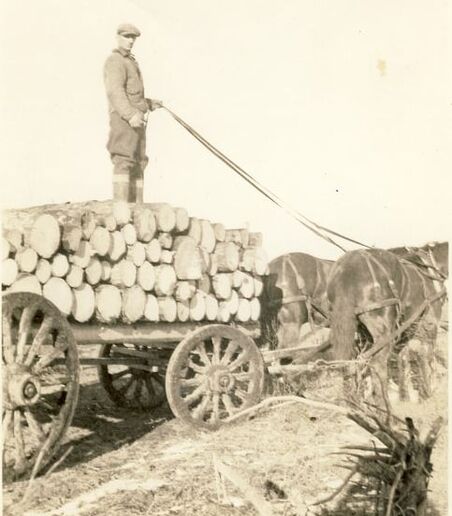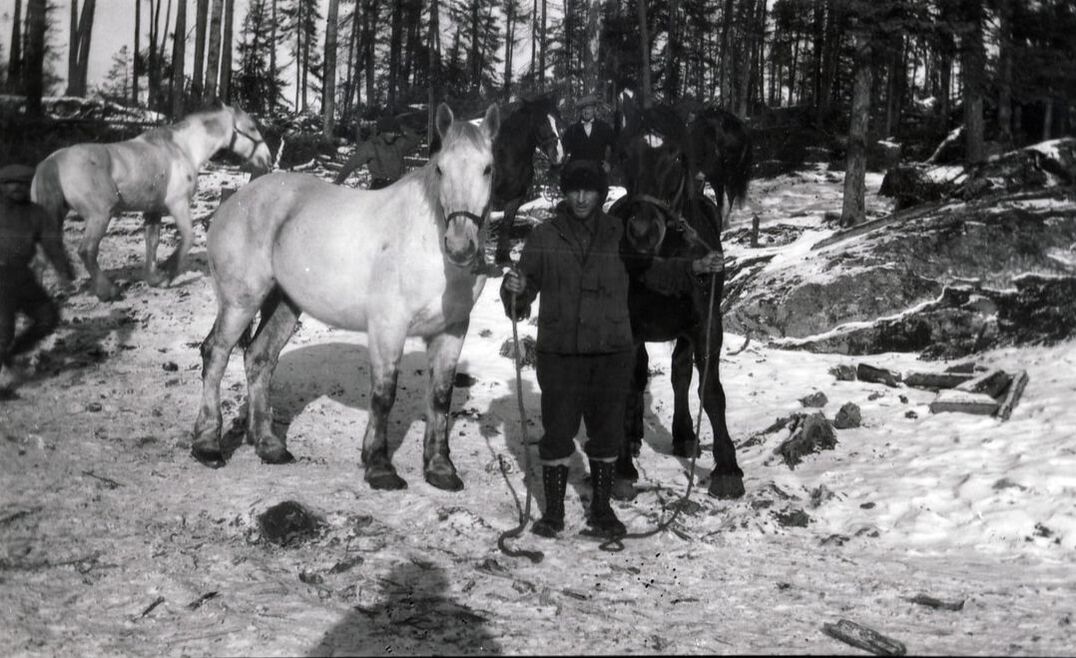By Horse
|
Horses were used in a variety of industries, such as early transportation. Horses can pull heavy loads and were the precursors for cars and tractors. Some of the prospectors brought horses to Red Lake in the 1925-1926 gold rush. Once in Red Lake, the horses would pull wagons or sleighs for prospectors searching for gold.
Tim Crowley, a prospector who came from Quibell, ON, drove his horse from Hudson to Red Lake. His horse became one of the early legends of Red Lake because of the tale of the $100 bag of oats. The myth claims Harold Farrington, one of the area’s first pilots, flew in a bag of oats for Crowley and handed him a bill for $100. Shipping rates at the time was $1/pound to ship items by plane. When Farrington’s plane got stuck on Howey Bay, Farrington asked Crowley to pull the plane out. When Farrington asked how much it would cost, Crowley said $100. In truth, Crowley hooked up his horse and pulled Farrington’s plane for free. Farrington wondered if there was anything that he could do for Crowley. Crowley replied that it was expensive to feed his horse, and a bag of oats would be nice. Farrington brought in a bag of oats on his next flight to Red Lake. No money ever changed hands for the freight cost, but the tale sounds more outrageous than the truth. |
The Red Lake Transportation Company used horses to pull transport the first load of heavy equipment over the ice to Red Lake. The company continued shipping for Howey Mine camp for the next couple of years, but there was stiff competition for freight companies. The Red Lake
Transportation Company started to buy tractors to pull freight but continued to use horses. The Northern Transportation Company and Patricia Transportation Company also had teams of horses to haul freight in winter. These companies became the leading transportation companies freighting to Red Lake. As the tractors improved and other freighting companies expanded their businesses, horses were gradually replaced by tractors trains by the early 1930s. |
|
In summer, some of the horses that worked for transport companies secured work at the portages. Horses were used to pull the loads across the portages until the marine railways were built in the 1930s. There were four portages along the trip from Goldpines to Red Lake. Each portage would need teams of horses to pull the freight across the portages.
|
The Red Lake Transportation Company started a stagecoach business along the route from Hudson to Red Lake. They had horses, drivers, sleighs, feed and cook tents along the trail approximately every 24-32 km (15-20 miles).
|
|
The cost was 44¢ per kilogram (20¢ per pound). This was cheaper than freight prices as freighting for horses or tractors was $200 to $250 per tonne (10¢ per pound). The stagecoach was known as the Haywire Express, but it closed when Red Lake Transportation Company went bankrupt. All of the company’s horses and other equipment was sold to the Northern Transportation Company in 1930.
|
Within the Red Lake area, horses continued to be used until the 1960s. Some people in Red Lake had large barns, but many of the barns were portable. The portable barns could hold 2 horses and were on skids, which could be moved into the bush or wherever the horses were working. Horses, unlike trucks, could be taken into the bush to pull the logs and loads. Horses were often used to collect timber and cordwood for the mines. In Red Lake, the garbage and the honey wagons were pulled by horses for many years. The honey wagon collected full buckets from the outhouses and replaced them with empty ones.
Dan Billyk drove the honey wagon in Red Lake during the 1940s and 1950s. On McKenzie Island, the horses at the Gold Eagle Farm were used to haul garbage to the dump as well as loads of wood in the winter. |

